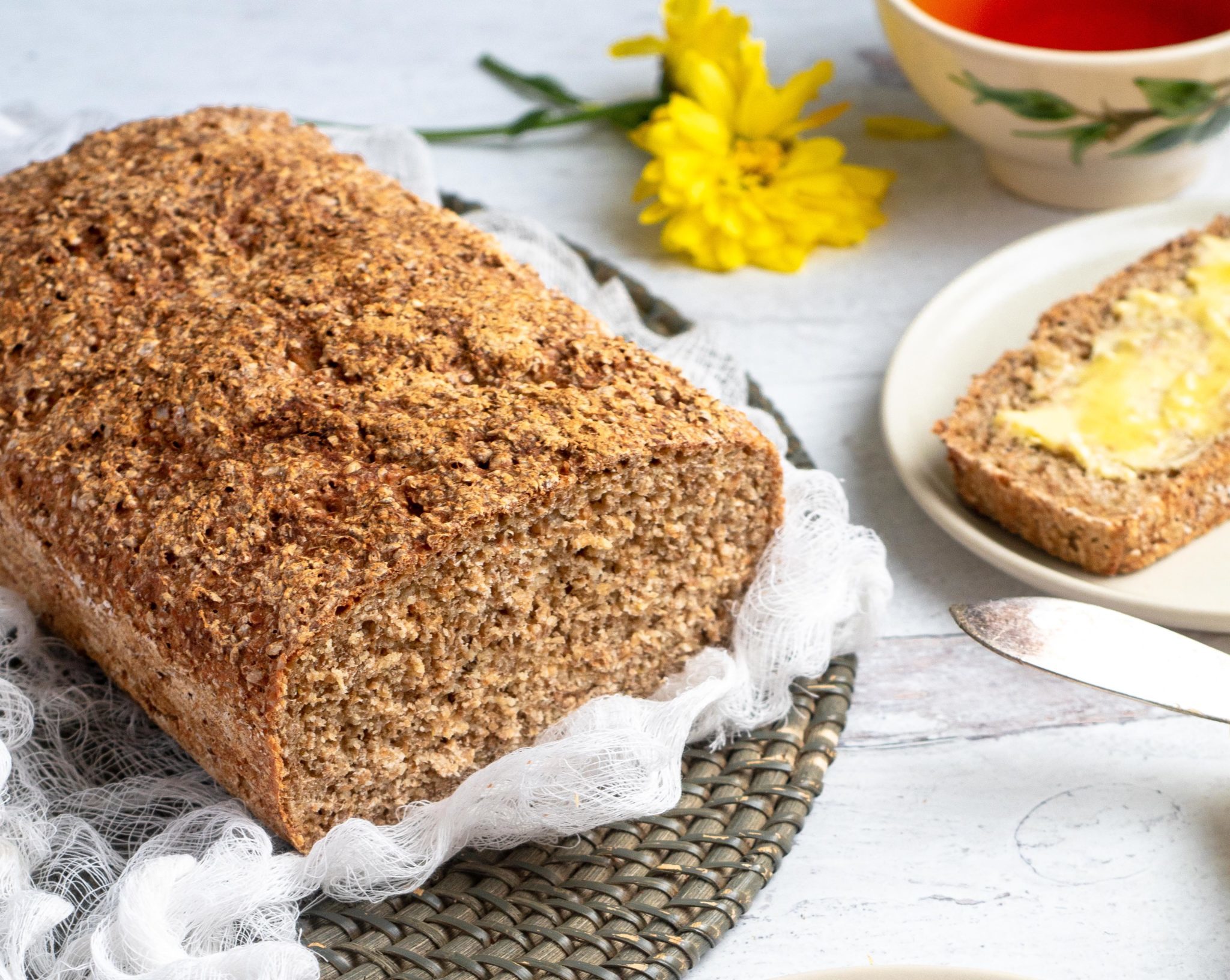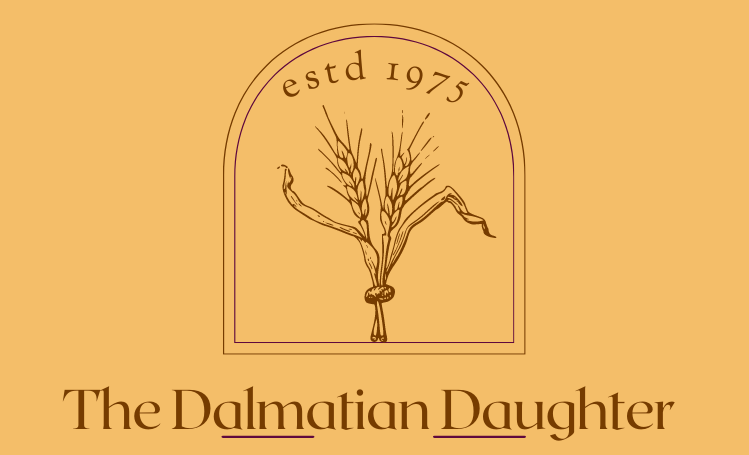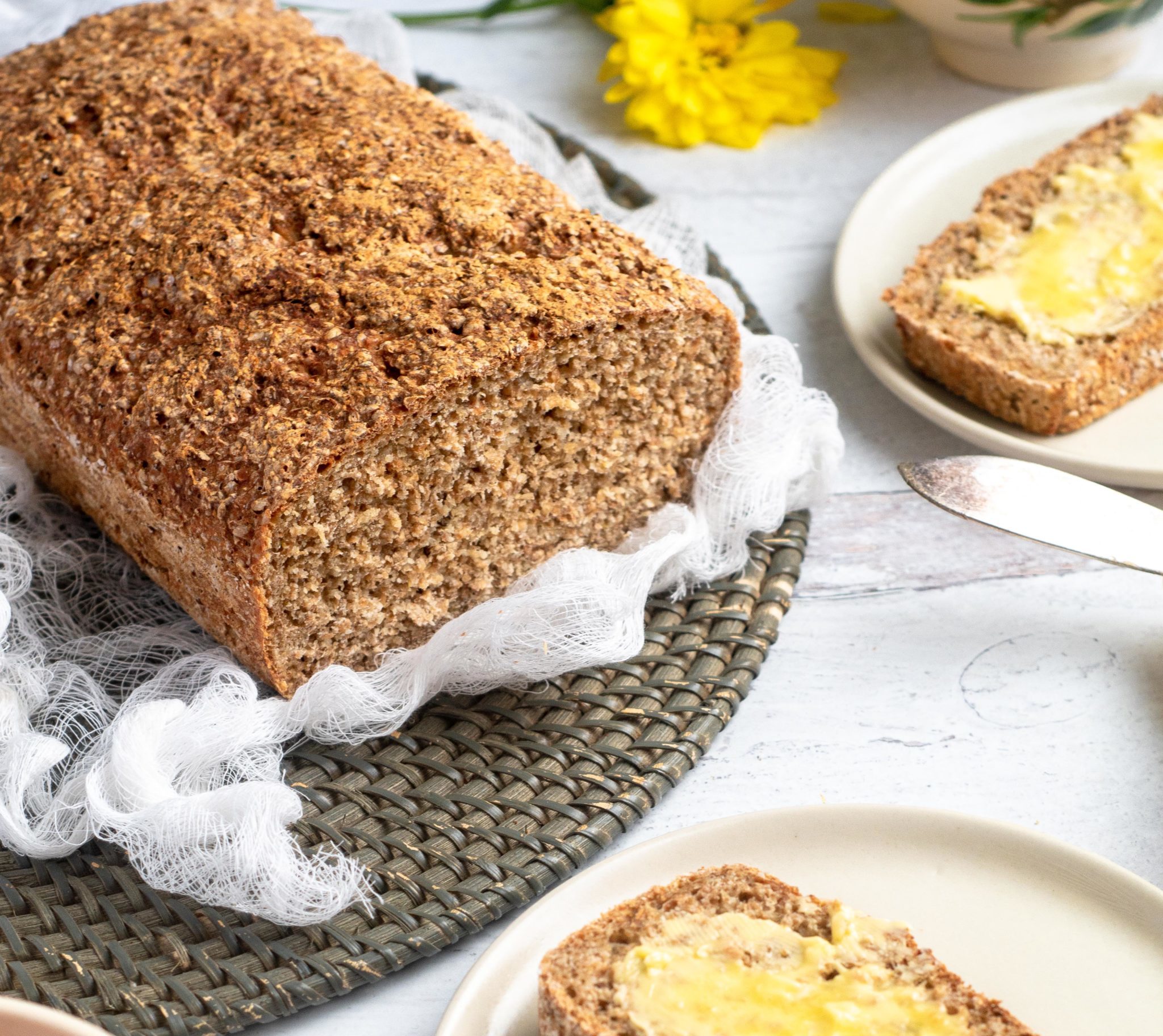Irish Brown Bread

I cannot remember the first time I had Irish brown bread. I’m guessing it was while living in Dublin and going to school that, one day, I bought a regular old package of sliced bread and the creamiest butter I’ve ever had.
Toast and butter, with tea, or coffee depending on the mood, is one of the great joys of life. It feels especially nice in cold winter weather, but it is mutable. It can bring winter comforts to almost any type of day outside or in.
For the only Thanksgiving I spent away from home when in Dublin, I attended a group potlock dinner. I had brought my family’s old fashioned giblets infused stuffing to the dinner. Before our main meal, we ate a round of silky Irish salmon. I still remember it to this day. It was bright and savory (and I am Not a fan of salmon at All). The salmon was laid out on a thick, freshly made piece of brown bread over a thin layer of Kerry Irish butter (the best). I intend on recreating that soon.
For now, it’s about the brown bread itself. The difference between brown bread and Irish brown bread is the flour. You can try and recreate it (I have with wheat germ and wheat flour), but, while very tasty, it tastes more like a harder rustic bread, or sometimes something akin to a soda bread.
There’s only one way to make true Irish brown bread. Coarse Wholemeal Flour. It is the magic touch needed. Odlums is the most known brand–you can order it online here, or, if you’re lucky enough to live near Queens, there is and has been for many years an Irish goods market with the best prepared foods around called The Butcher Block. I lived nearby, as did my boyfriend, years ago and frequented many an Irish bar near or on Queens Boulevard. Recently, we took a multicultural trip back to Sunnyside for a Turkish-Irish mission: get Turkish sausage and goods and get wholemeal flour for brown bread at the Butcher Block.
I then was tasked with the style of brown bread to make. I do enjoy a good wide sliced bread, but I wanted something halfway between sliced bread and rustic. I had an old Irish cookbook and found this recipe there. It’s pretty straightforward and simple, and the best part is that it is a NO KNEAD BREAD.
Hallelujah.
It keeps well, and works as a traditional bread and butter or jam toast, is a wonderful companion to hearty soups and as a bread served with dinner. It even makes good sandwiches. Hell, I make avocado toast with a fried egg on my Irish brown bread. It moves betweens the old world and the new with dignity and might, like all the best Irish myths.
Irish Brown Bread
Ingredients
Equipment
Method
- In a bowl, mix the dry ingredients.
- In a bowl, add 5 oz of the water and stir in the molasses. Once incorporated, stir in the yeast. Set aside for 10 minutes.
- Add the yeast mix and the remaining 10 oz of water into the dry flour mix and stir (I used a stand mixer with dough hook, but this is totally doable by hand) until the ingredients become batter like. Set aside for 10 minutes.
- Grease the loaf pan and add parchment paper to the pan (*see notes for tips). Pour the batter to the pan and smooth with an offset spatula or your hand. Allow for a final rise for 20 minutes in a warm place.
- In a 450 degree oven, bake the bread for 20 minutes. Following that, reduce the heat to 400 degrees.
- Take the loaf out of the pan by loosening at the sides and removing using parchment paper. Place the loaf upside down on the baking rack and bake for another 15 minutes, until the bottom sounds hollow when tapped. Cool on a wire rack.
Notes
- *A good idea where loaf pans are concerned for cakes or bread is to cut a piece of parchment paper the length of the pan, plus at least 6 inches in either direction. Then, cut a similar piece of parchment the width of the pan plus 6 inches up either side. You can fold the paper over all four edges and use small binder clips to secure. When it is time to release the bread or cake, just loosen the parchment slips and use to remove cleanly and completely.
- To let the bread rise, I place the bread with a towel over it (damp is good) in a 200 degree oven, then shut off the oven and prop the door open with a wooden spoon. It’s a nice warm, but slow moving temperature and gets the job done.
- Once you have the coarse wholemeal flour, do as I have done if you don’t make this bread every week: freeze it!

